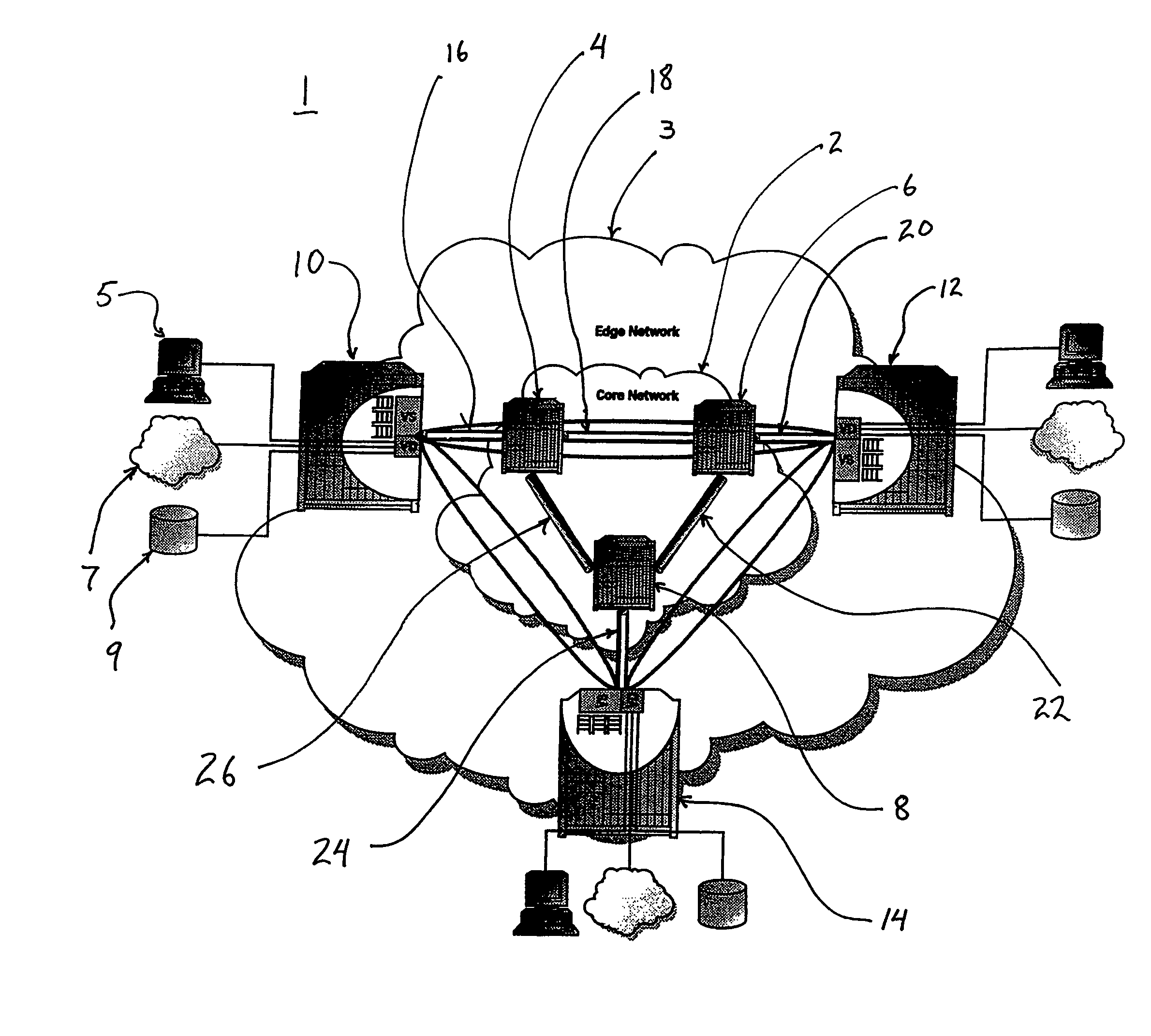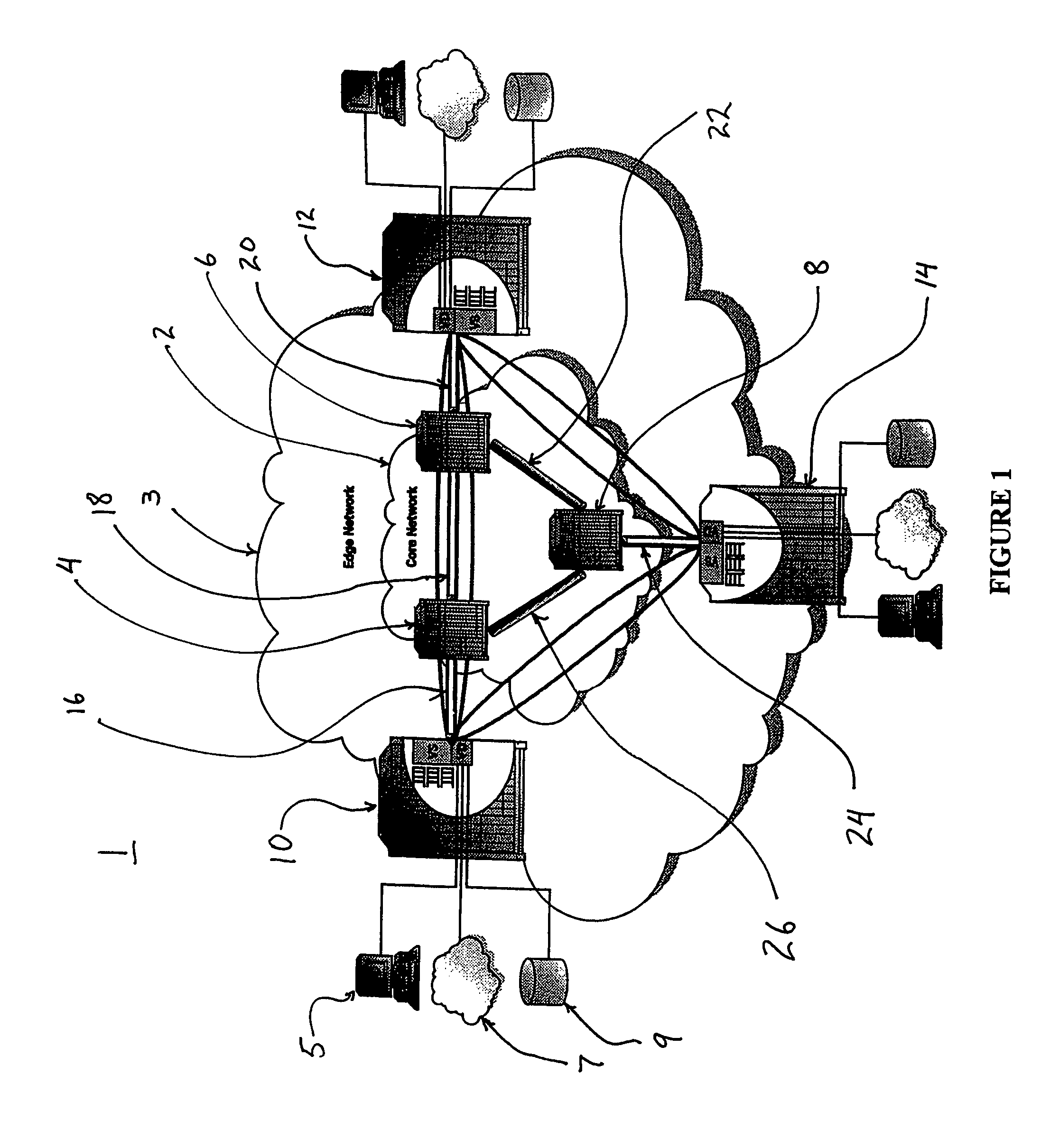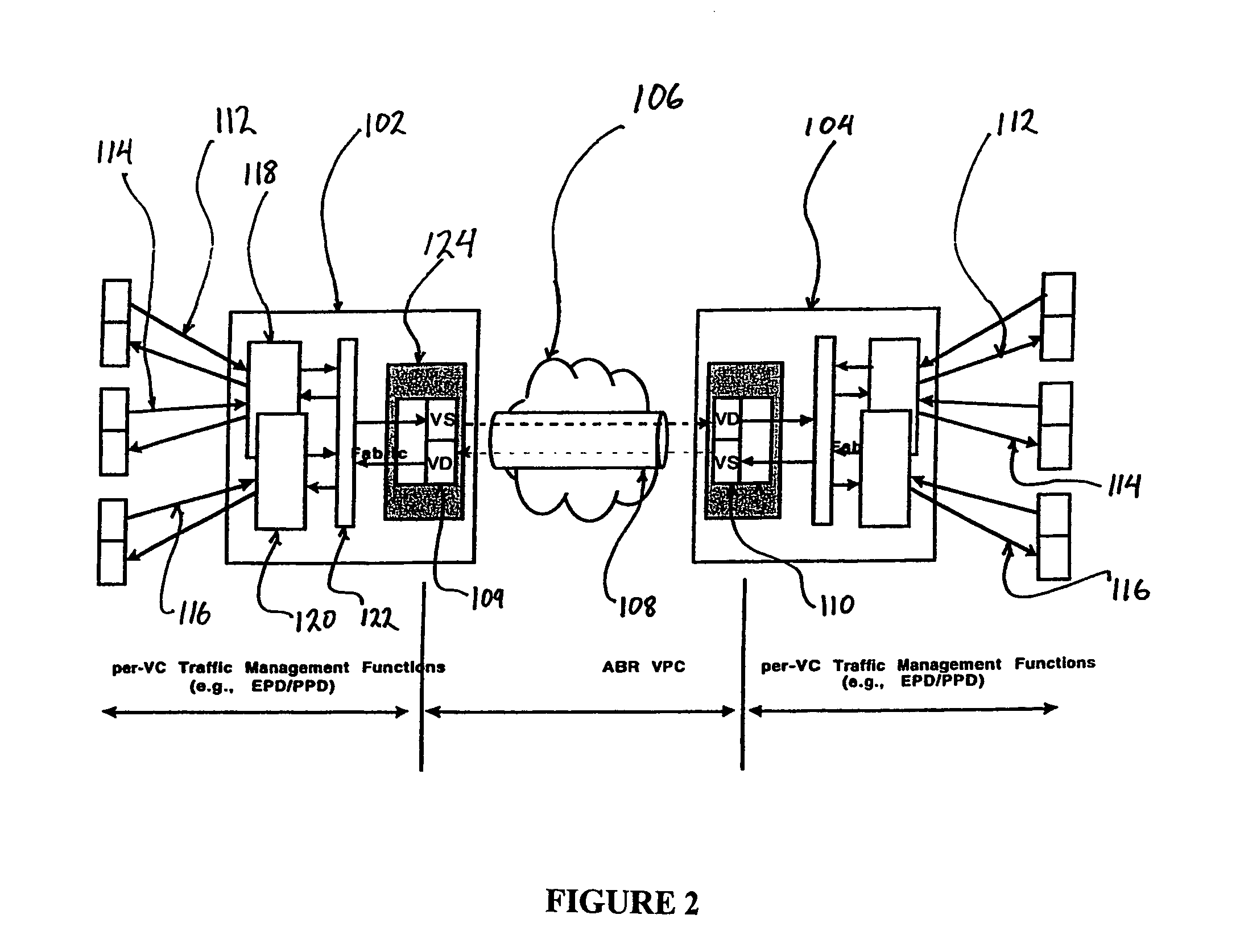Method and apparatus for provisioning traffic dedicated cores in a connection oriented network
a technology of connection oriented network and dedicated core, applied in data switching networks, high-level techniques, frequency-division multiplexes, etc., can solve the problems of increasing the complexity of the traffic management functions performed by the nodes, cell loss, and inability to guarantee the mission bandwidth, so as to achieve the effect of ensuring the mission bandwidth
- Summary
- Abstract
- Description
- Claims
- Application Information
AI Technical Summary
Benefits of technology
Problems solved by technology
Method used
Image
Examples
example
[0072]The method of the invention was evaluated using a mathematical simulation model of an ATM network. The evaluation was made according to discrete event simulation techniques using available software tools, as well known to those skilled in this art. The details of the simulation model and the results of the tests are described below. The simulations compared the performance achieved by transporting TCP traffic over a network core using in the UBR VPCs in the network core in the first case, and ABR VPCs in the second. In both the UBR and the ABR simulations, the same traffic management features were provided at the edge of the network core. The evaluation concentrated on the scalability and performance trade-offs between ABR and UBR VPC networks. Scalability refers to the performance response of a particular network to increase traffic volumes. Performance measures include goodput, fairness, and buffer requirements.
[0073]The network configuration used in the simulation featured ...
PUM
 Login to View More
Login to View More Abstract
Description
Claims
Application Information
 Login to View More
Login to View More - Generate Ideas
- Intellectual Property
- Life Sciences
- Materials
- Tech Scout
- Unparalleled Data Quality
- Higher Quality Content
- 60% Fewer Hallucinations
Browse by: Latest US Patents, China's latest patents, Technical Efficacy Thesaurus, Application Domain, Technology Topic, Popular Technical Reports.
© 2025 PatSnap. All rights reserved.Legal|Privacy policy|Modern Slavery Act Transparency Statement|Sitemap|About US| Contact US: help@patsnap.com



